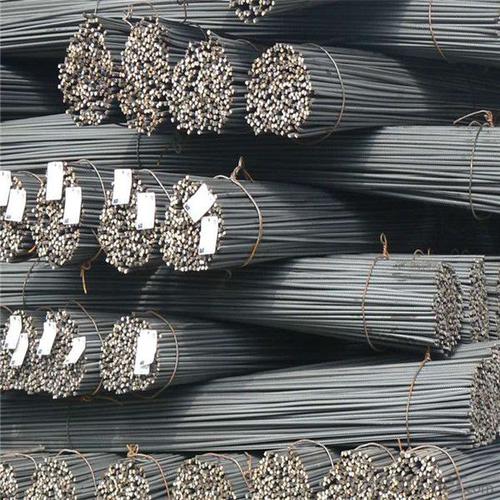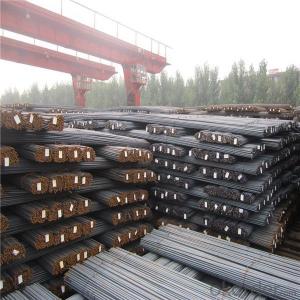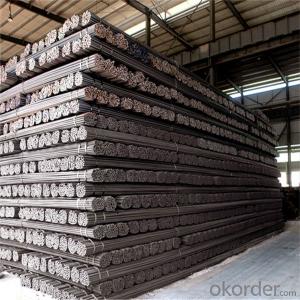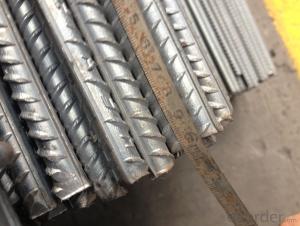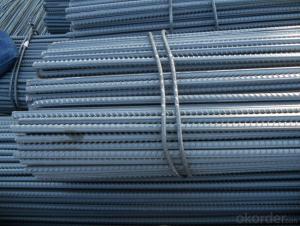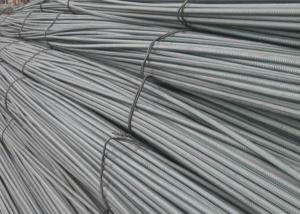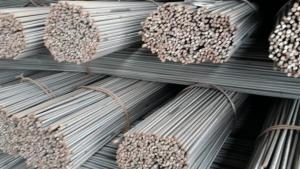Rebar Steel 12mm Grade HRB400 HRB500 China mill
- Loading Port:
- Tianjin
- Payment Terms:
- TT OR LC
- Min Order Qty:
- 100 m.t.
- Supply Capability:
- 19000 m.t./month
OKorder Service Pledge
OKorder Financial Service
You Might Also Like
Specification
Deformed Steel bar is a common steel reinforcing bar, used in reinforced concrete and reinforced masonry structures.
It is formed from mild steel, and is given ribs for better frictional adhesion to the concrete. The Deformed Steel bar is an
iron rod , a weldable plain reinforcing steel bar, and can be used as well for steel meshes.
Features
1、Pure steel quality, stable chemical contents, small tolerance.
2、Constant Quality, good drawing performance.
3、High dimension accuracy degree, accuracy degree of Level C up to 80%, smooth surface, less scale, easy to be pickled.
4、Automatic bundling with 4 lines by Machine in tidy and good looks
5、Big high quality percentage, small coil percentage, and heavy coil weight for Hard Coil.
6、High sorbitizing percentage.
Product Description :
Chemical composition (%): | Steel | C | Si | Mn | P | S | Ceq | ||||
HRB335 |
0.25 |
0.80 |
1.60 |
0.045 |
0.045 | 0.52 | |||||
HRB400 | 0.54 | ||||||||||
HRB500 | 0.55 | ||||||||||
Mechanical properties | Steel | Rel/ MPa | Rm/ MPa | A/ % | Agt/ % | ||||||
≥ | |||||||||||
HRB335 | 335 | 455 | 17 |
7.5 | |||||||
HRB400 | 400 | 540 | 16 | ||||||||
HRB500 | 500 | 630 | 15 | ||||||||
Package: | Standard export packing or as customer's request | ||||||||||
Application: | Construction, building, bridge, road. ect | ||||||||||
Payment terms | 1).100% irrevocable L/C at sight. | ||||||||||
Delivery time | 15-30 days after receipt of L/C or deposit by T/T | ||||||||||
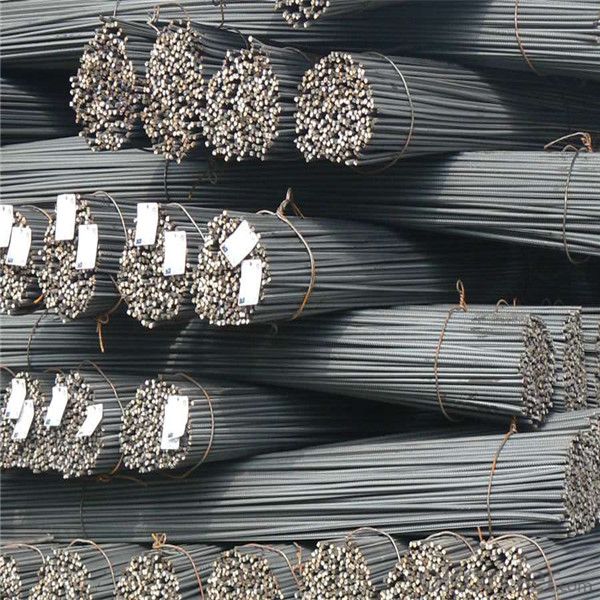
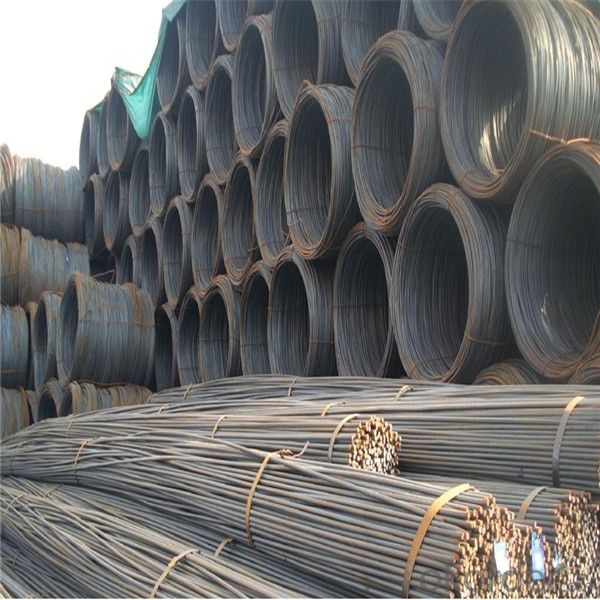
Packing:
In bundles, each bundle weight 3.5 tons. Load by container or by bulk verssel.
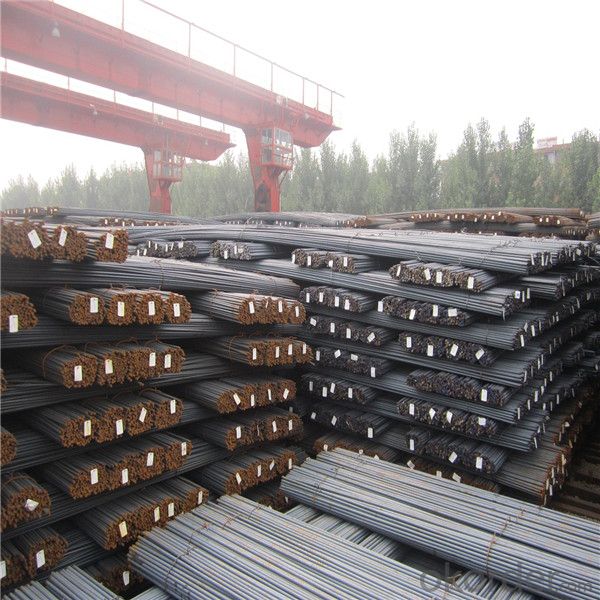

Our service
(1) We cooperate with famous factories with advanced equipment and well trained workers.
(2) We can provide factory price with trading company service.
(3) We continuously work on the improvement of our processes, guaranteeing consistently high standards
of quality to keep none compensation.
(4) We guarantee 24 hours response and 48 hours solution providing service.
(5) We accept small order quantity before formal cooperation.
(6) We deliver the agreed quality at the agreed time, reacting to changes in customer wishes in a flexible way.
(7) Due to our volume and selling power, we have excellent freight rates with shipping lines.
(8) We strive to always be fair and honest in our dealings with customers.
(9) We strive to work together with customers to achieve much more than we can achieve alone.
(10) Through our passion and commitment we aim to be a market leader in all our key markets. To maintain
our position as market leader we must continue to add value in all that we do.
FAQ:
1.Q: What's your MOQ(minimum order quantity)?
A: One full container, mixed acceptable .
2. Q: What's your packing methods?
A: Packed in bundle or bulk ..
3. Q: How can I buy CNBM products in my country?
A:Please send us an inquiry or email ,we will reply to you if there is distributor in your country
4. Q: Can we visit your factory?
A: Warmly welcome. Once we have your schedule, we will arrange the professional sales team to follow up your case.
5. Q: How long does it take to get the product if i place an order?
A:With the process of your requirements,we will pack and deliver in 3-7 days. If it is by sea shipment,it will take 15-45 days depending on different locations
- Q: What is the effect of improper storage on the corrosion resistance of steel rebars?
- Improper storage of steel rebars can significantly reduce their corrosion resistance. When exposed to moisture, humidity, or extreme environmental conditions, steel rebars can develop rust and corrosion. This compromises their structural integrity and durability, making them more susceptible to failure and compromising the overall strength of the reinforced concrete structure. Therefore, proper storage conditions, such as keeping rebars dry, protected from moisture and contaminants, and stored off the ground, are crucial to maintaining their corrosion resistance and ensuring their long-term performance.
- Q: How are steel rebars protected from concrete spalling?
- Steel rebars are protected from concrete spalling through the use of two main methods: epoxy coating and concrete cover. Epoxy coating is applied to the rebars to prevent direct contact with the concrete, forming a protective layer that prevents corrosion. Additionally, a sufficient concrete cover is provided around the rebars to shield them from environmental factors and potential damage, ensuring their long-term durability and structural integrity.
- Q: What are the different methods of protecting steel rebars from fire?
- There are several methods of protecting steel rebars from fire. One common approach is to apply a coating of fire-resistant material, such as intumescent paint or epoxy-based fireproofing, directly onto the rebar surface. These coatings expand and form a protective layer when exposed to high temperatures, slowing down the transfer of heat to the steel and delaying its structural weakening. Another method involves encasing the rebars in fire-resistant materials, such as concrete or gypsum board, creating a barrier between the steel and the fire. Additionally, fireproofing sprays and wraps can be used to provide temporary protection during construction or renovation projects. Each method has its own advantages and suitability depending on the specific application and fire safety requirements.
- Q: Can steel rebars be used in high-rise buildings?
- Yes, steel rebars can be used in high-rise buildings. Steel rebars provide excellent strength and durability, making them suitable for reinforcing concrete structures in tall buildings. The use of steel rebars ensures structural stability and enhances the overall strength of high-rise buildings, making them a common choice in construction.
- Q: Are there any codes or regulations for the use of steel rebars in construction?
- Yes, there are codes and regulations that govern the use of steel rebars in construction. These codes provide guidelines for the design, fabrication, and installation of rebars to ensure structural integrity and safety in buildings and other structures. Some commonly used codes include the American Concrete Institute (ACI) 318, British Standards (BS) 8666, and the European Standard (EN) 1992-1-1. Compliance with these codes is essential to meet the required standards and regulations in the construction industry.
- Q: Can steel rebars be used in high-rise construction projects?
- Yes, steel rebars can be used in high-rise construction projects. Steel rebars provide reinforcement to concrete structures, increasing their strength and ability to withstand heavy loads and stresses. They are commonly used in high-rise construction to ensure the structural integrity and stability of the building.
- Q: What are the guidelines for ensuring proper concrete cover over steel rebars?
- To ensure the long-term durability and performance of reinforced concrete structures, it is crucial to have the appropriate concrete cover over steel rebars. Here are some tips to achieve the correct cover: 1. Compliance with building codes and specifications is essential. These regulations establish minimum requirements for concrete cover over steel rebars to ensure structural integrity, fire resistance, and corrosion resistance. It is important to consult and adhere to the applicable codes and specifications for your project. 2. Determine the required concrete cover based on factors such as environmental conditions, exposure to aggressive agents, structural design, and reinforcement type. Structural engineers typically assess these factors to determine the necessary cover and protect the rebars adequately. 3. Carefully select the concrete mix design to achieve the desired strength, durability, and workability. Consider factors like the quality and size of aggregates, cement content, water-to-cement ratio, and use of additives or admixtures. A well-designed mix will promote proper bonding and sufficient protection of the rebars. 4. Maintain proper construction practices. This includes using appropriate formwork and reinforcement placement techniques, ensuring correct concrete placement, compaction, and curing. Proper positioning and secure tying of the rebars are crucial to maintain the required cover and prevent displacement during concrete pouring. 5. Regular inspections and monitoring during construction are necessary. Check the placement of reinforcement, cover thickness, and overall concrete quality. Address and rectify any deviations from the specified requirements promptly. 6. Protect against corrosion. Adequate concrete cover helps prevent corrosion, but additional measures can enhance durability. Consider using corrosion-resistant rebars, applying epoxy coatings, or utilizing corrosion inhibitors to further protect the reinforced concrete structure. 7. Document and maintain records of the construction process, including reinforcement placement, cover thickness, and any modifications made. This documentation will be useful for future reference, maintenance, and repairs. By following these guidelines, you can ensure the appropriate concrete cover over steel rebars, resulting in durable and structurally sound reinforced concrete structures. It is always advisable to consult with structural engineers and construction professionals to meet specific project requirements and comply with local building codes and regulations.
- Q: How do steel rebars affect the overall load-bearing capacity of a structure?
- Steel rebars significantly enhance the load-bearing capacity of a structure by reinforcing the concrete and enhancing its tensile strength. The addition of steel rebars improves the structural integrity, increases resistance to bending and cracking, and allows the structure to withstand heavier loads and external forces.
- Q: How do steel rebars affect the overall load distribution of concrete structures?
- The load distribution of concrete structures is critically influenced by steel rebars, which play an essential role. Reinforcement is provided by steel rebars, enhancing the overall strength and durability of the concrete. Concrete is strong in compression but weak in tension, which is counterbalanced by embedding steel rebars within it. This ensures a more even distribution of the load and helps prevent cracks and structural failures by absorbing and distributing tensile forces exerted on the concrete. The presence of steel rebars effectively transfers tension forces to the surrounding concrete as the load is applied to the structure. This mechanism of load transfer results in a more balanced distribution of forces throughout the structure. The steel rebars work in harmony with the highly compression-resistant concrete, preventing excessive deflection and maintaining the structural integrity of the overall system. This is particularly crucial in large-scale concrete structures like bridges, high-rise buildings, and dams, where careful load distribution is necessary for stability. In conclusion, steel rebars have a significant impact on the load distribution of concrete structures, reinforcing the concrete and enhancing its tensile strength. They work in partnership with the concrete to ensure an even distribution and transfer of the load, preventing cracks and structural failures. The combination of steel rebars and concrete creates a robust and dependable structural system capable of withstanding applied loads and ensuring long-term safety.
Send your message to us
Rebar Steel 12mm Grade HRB400 HRB500 China mill
- Loading Port:
- Tianjin
- Payment Terms:
- TT OR LC
- Min Order Qty:
- 100 m.t.
- Supply Capability:
- 19000 m.t./month
OKorder Service Pledge
OKorder Financial Service
Similar products
Hot products
Hot Searches
Related keywords


